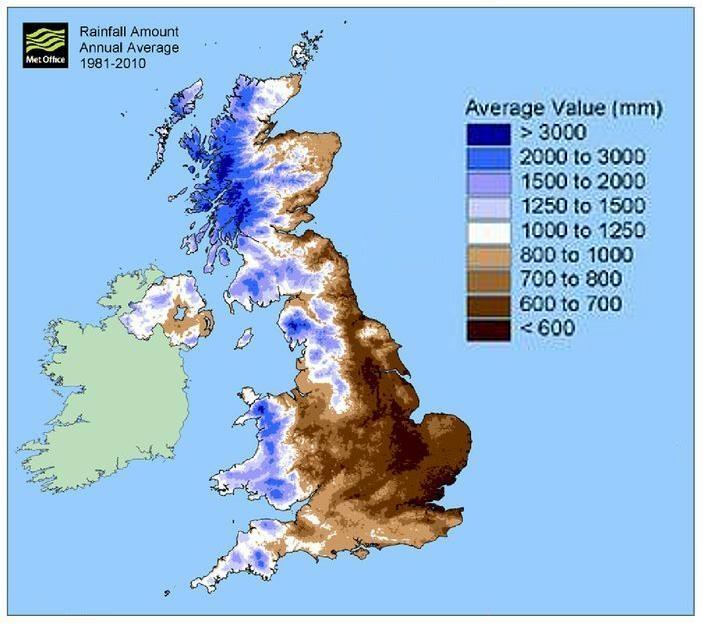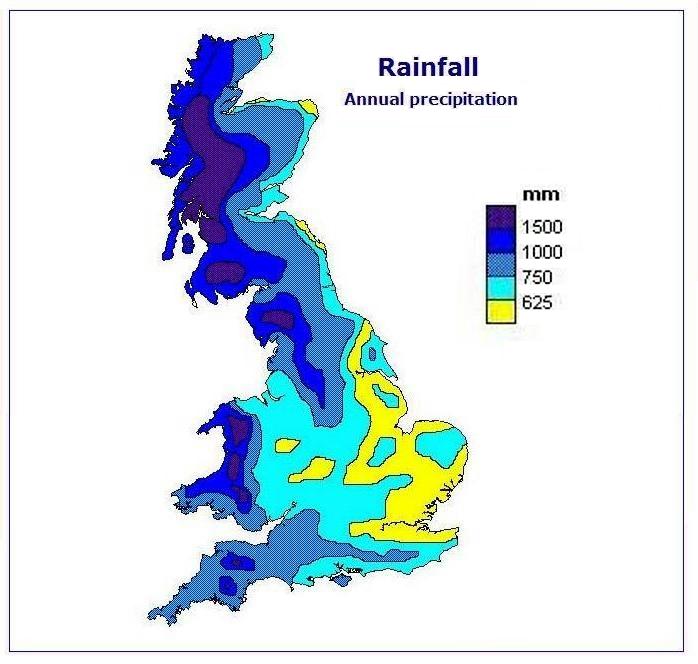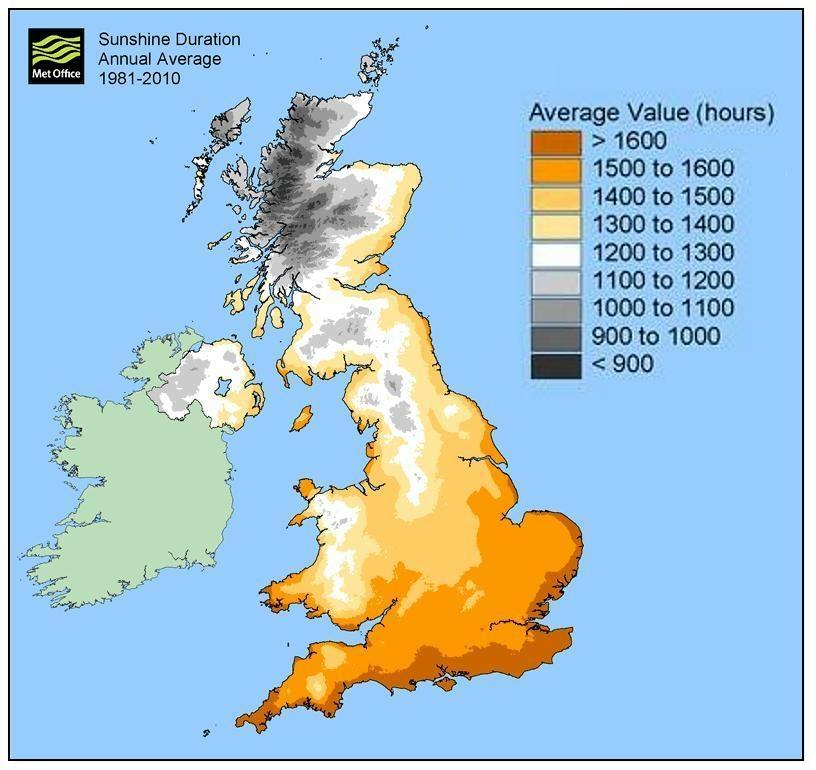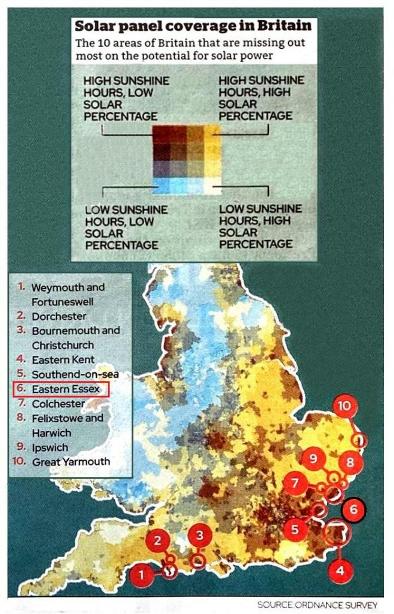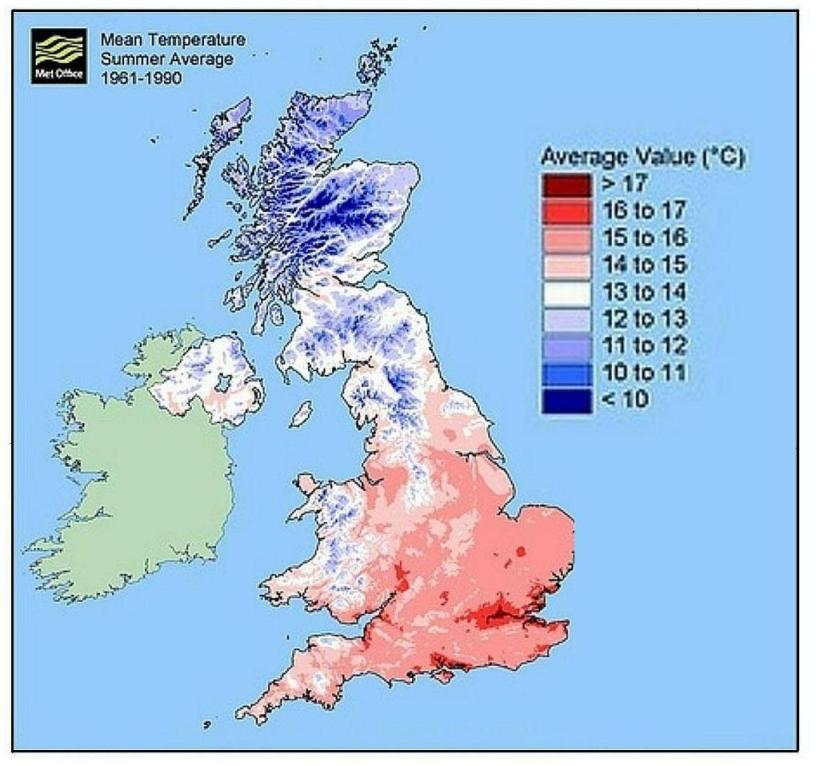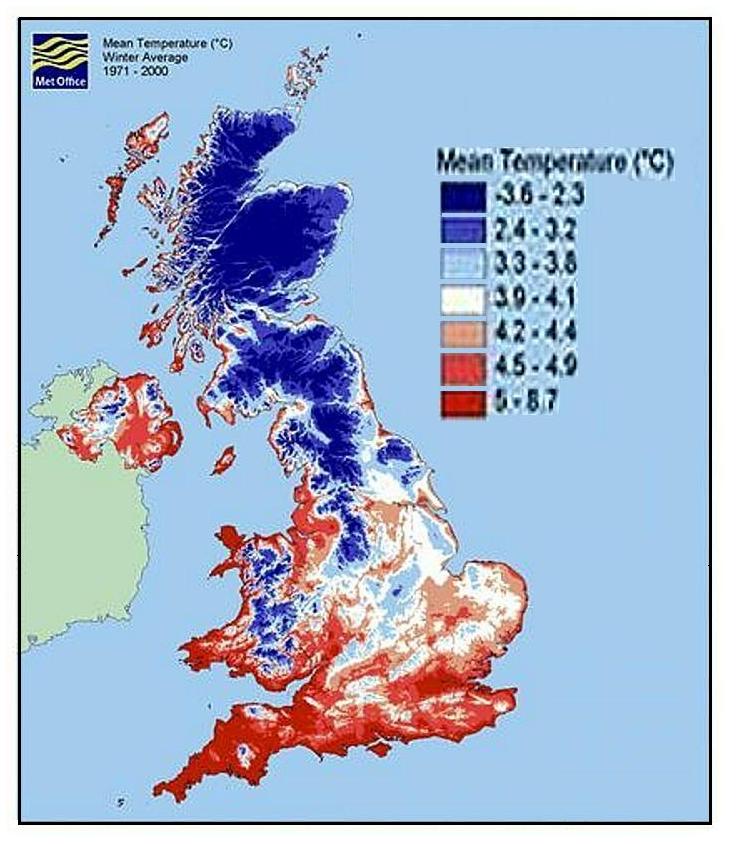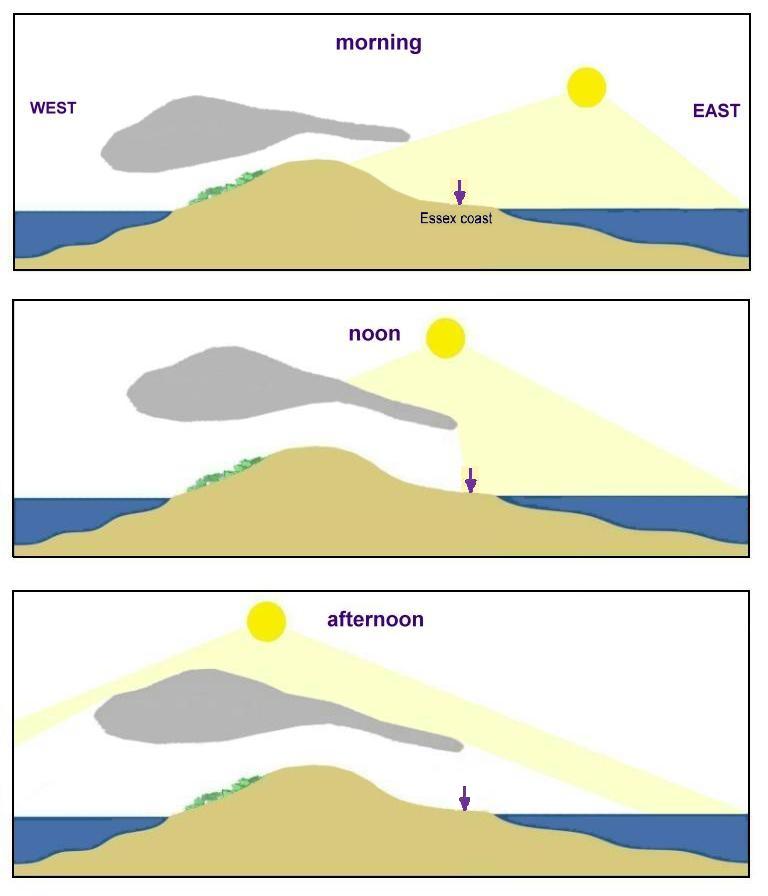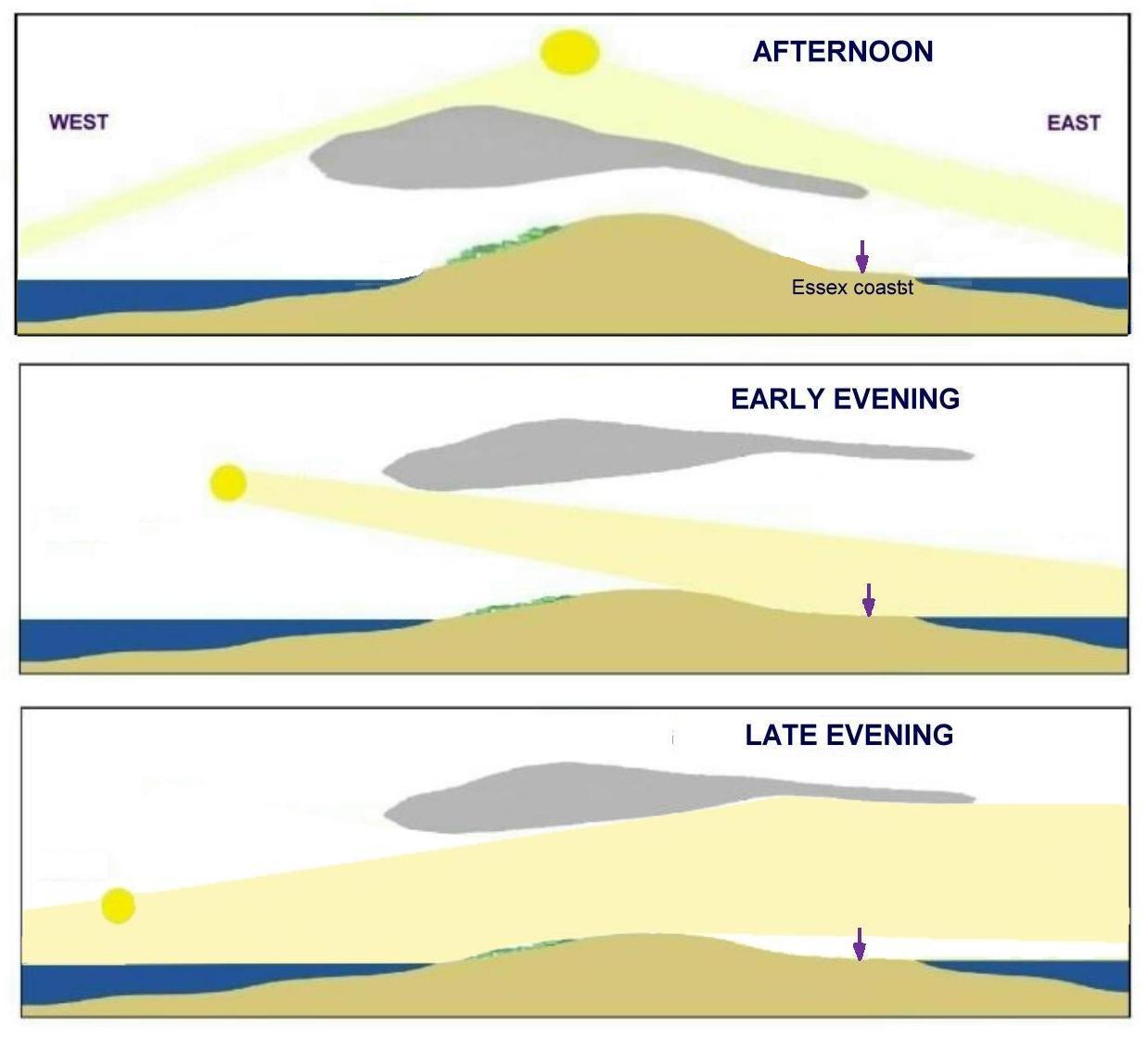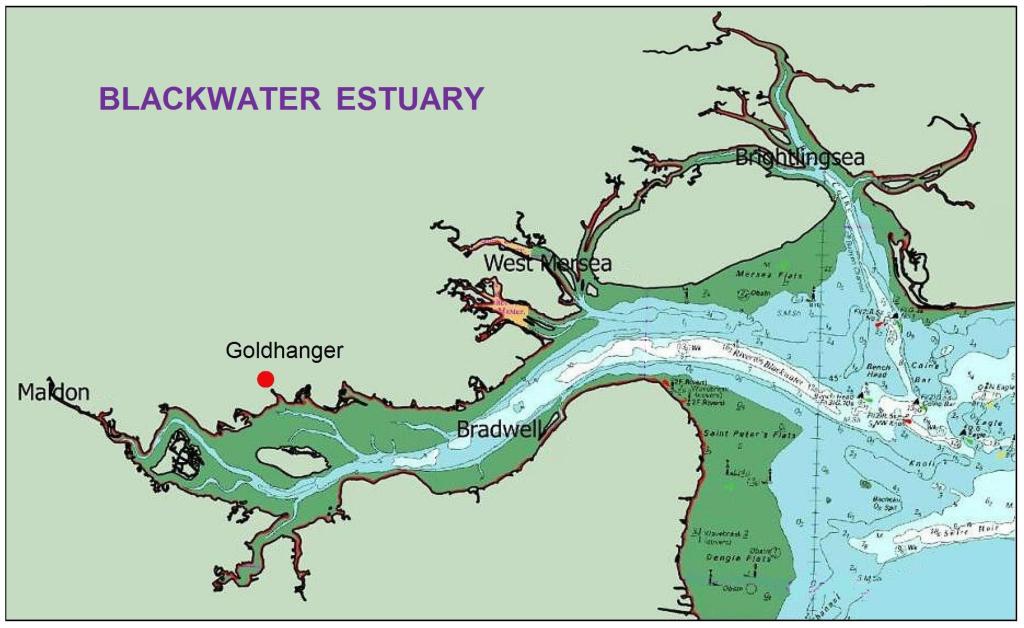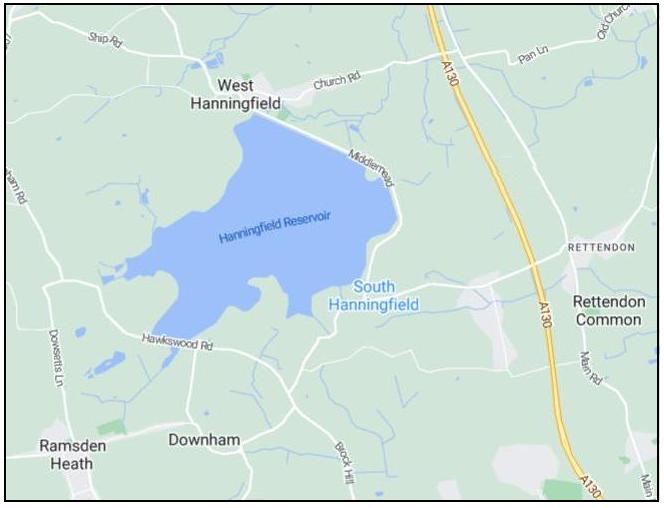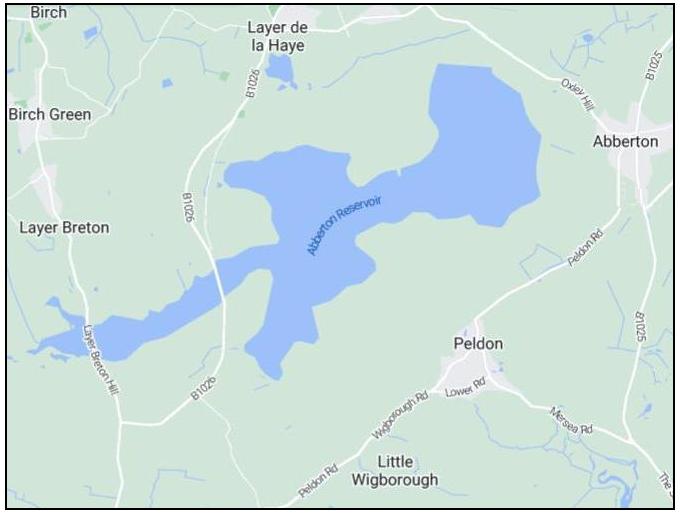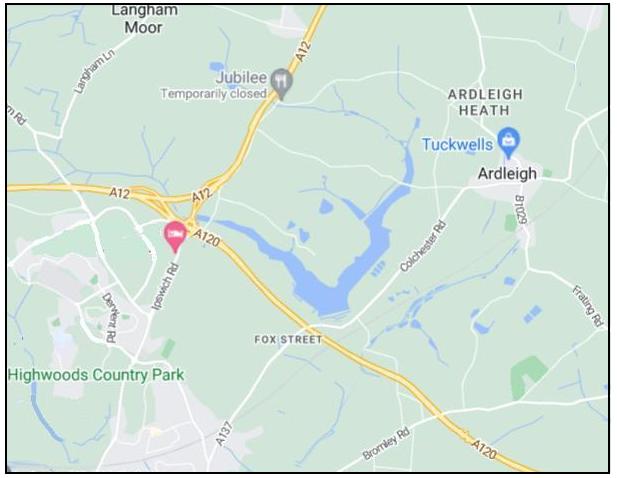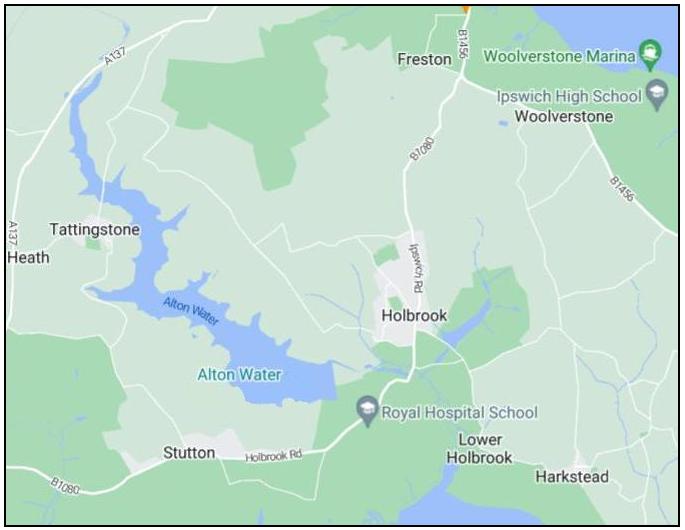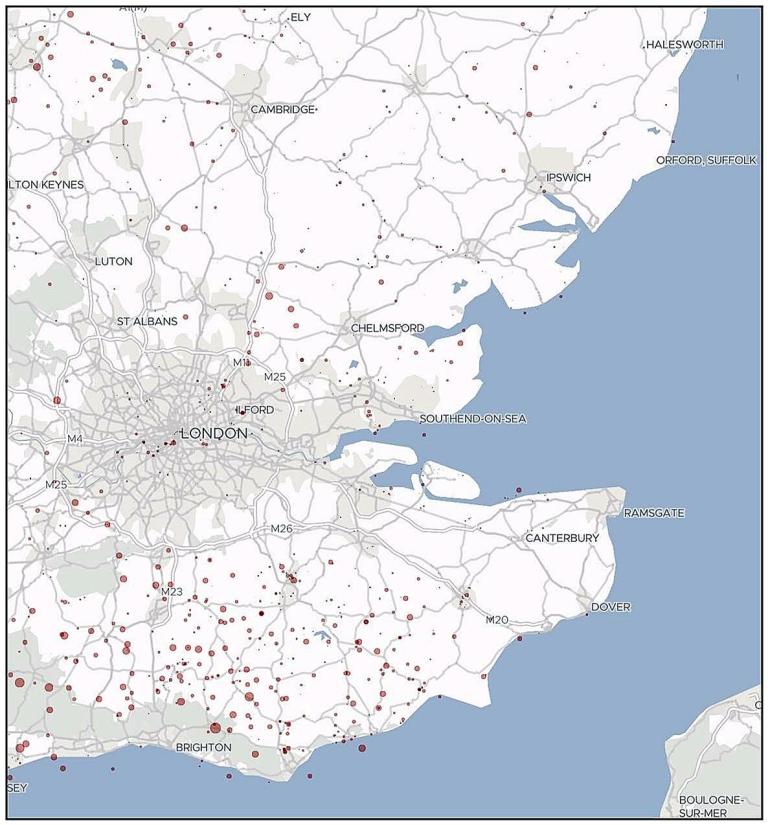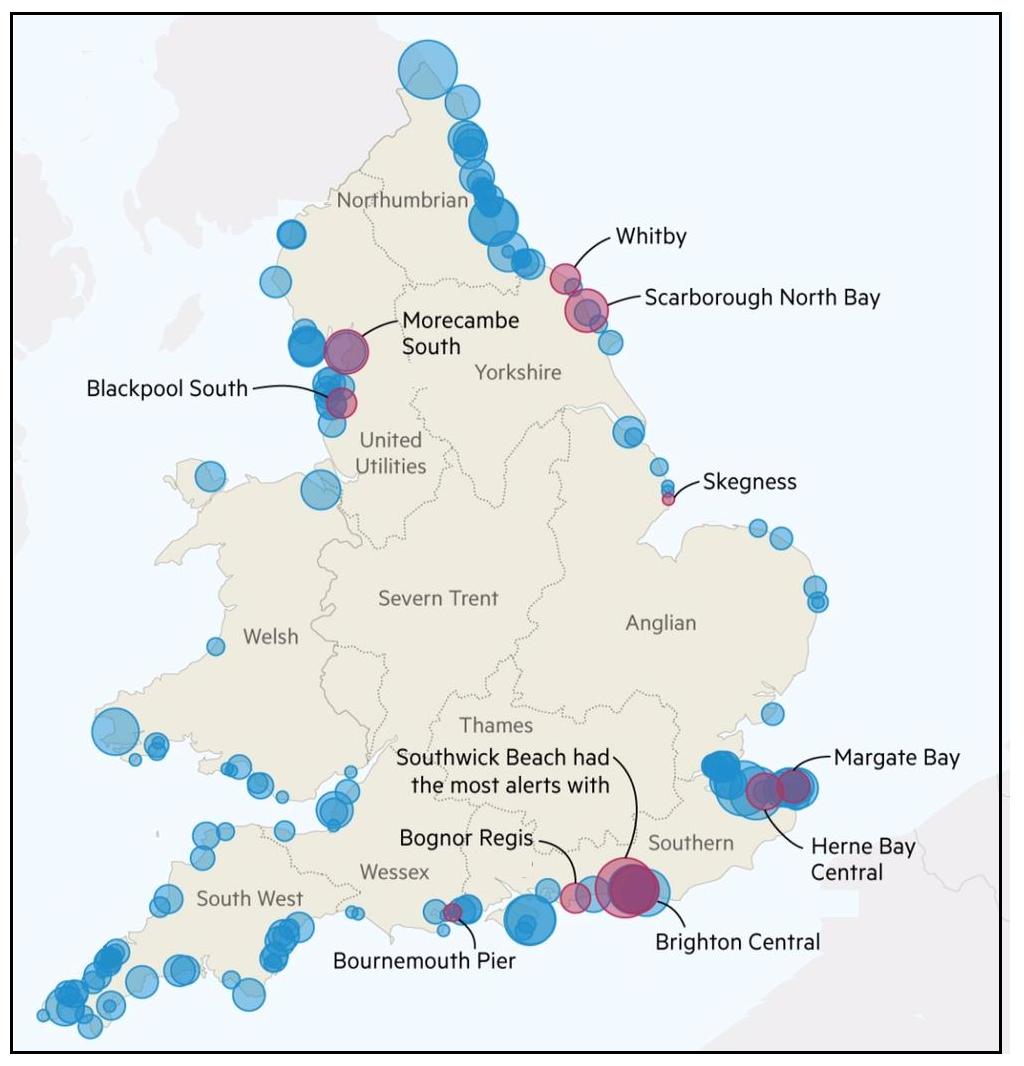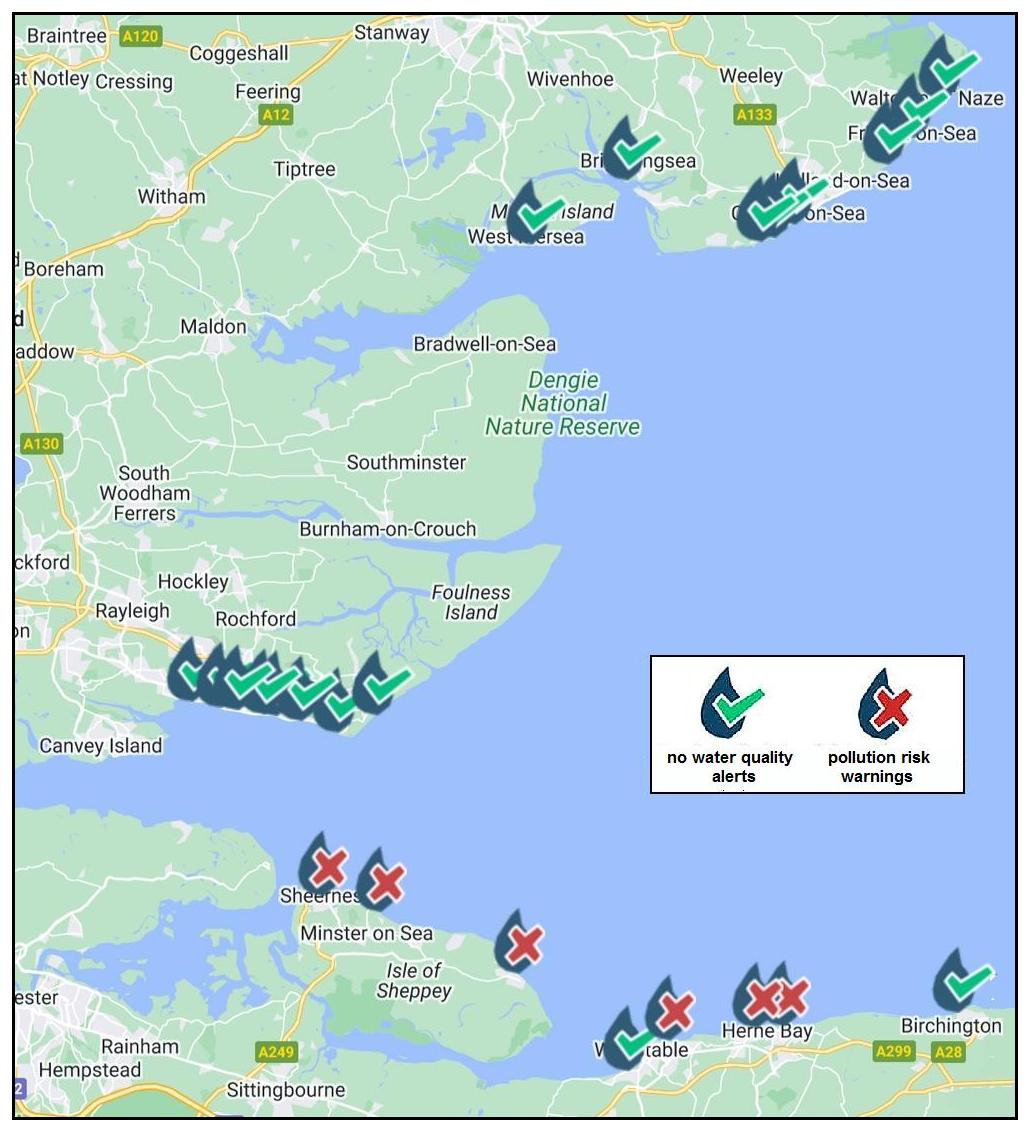|
The Climate at Goldhanger and around the Blackwater The climate on the Essex costal
region and particularly around the Blackwater Estuary is notably different to
the majority of the UK and even other parts of Essex... o The effects of being on
the east coast o Influences of being
close to a large estuary o Recent effects of
climate change The effects of being on the east coast The most significant meteorological phenomenon is known
as the rain shadow effect... |
|||||||||
|
Extensive
national and regional data is available from the UK Met.Office
showing the history and variations in climate across the UK over many years,
and this data has been interpreted here to demonstrate its significance for
this coastal region... |
|||||||||
|
rainfall levels |
|||||||||
|
sunshine
levels |
|||||||||
|
from a 2025 newspaper article |
|||||||||
|
These maps reveal that the immediate vicinity of the
Blackwater has the combination of both very low rainfall and
high levels of sunshine, comparable to the south coast. The two driest places
in the UK are recorded as St Osyth and Shoeburyness, both on the Essex coast.
The two driest gardens in the UK open to the public are Beth Chatto's Garden
at Elmstead Market and RHS Hyde Hall, again both in Essex. The total annual
rainfall recorded near Goldhanger in 2013 was 51.7cm. Here are some average
annual rainfalls in centimetres from the Met. Office website as a comparison: |
|||||||||
|
St Osyth Shoeburynes Chelmsford |
50.7 51.5 59.1 |
Colchester Oxford Cardiff |
60 65 115.2 |
|
|||||
|
National and regional weather forecasters sometimes say
“...and it will be drier on the east coast", but more often say “...and
it will be cooler on the east coast". However, the average
temperature maps available and summarised below show that both the summer and
winter temperatures along our part of the Essex coast are not significantly
different to those along the south coast. So perhaps they should be saying
“...and an easterly wind-chill effect will make it seem cooler on the east
coast”. With increased “global warming” a cooler east coast on hot summer days
maybe no bad thing! |
|||||||||
|
average
summer temperatures |
average
winter temperatures |
||||||||
|
An
additional and very noticeable effect on the east coast is the frequent sunny
mornings which are another consequence of the rain
shadow effect. This
diagram shows the what happens as the sun rises from the east and meets the
clouds coming from the south-west at around midday... There
is one further effect of being on low land in the east of the country... As the sun begins to set in the west
it emerges from behind the clouds frequently covering most of the country to
the west and there is often a short period of bright, colourful sunsets that
illuminate tall exposed buildings, such as the Church Tower. |
|||||||||
|
The Church tower at sunset |
view from The Chequers Inn looking
east across The Square and along Head St. |
||||||||
|
___________________________________________________ |
|||||||||
|
Influences of being close to a large estuary Farmers
and gardeners know that coastal areas benefit from the moderating effect of
the warmer sea in winter months, which is another meteorological
phenomena known as Maritime or Marine Influence, and
large estuaries such as the Blackwater bring that effect further inland. The Blackwater Estuary is the
largest estuary in Essex and one of the largest in the UK, being 14 miles
long and about 3 miles wide at its mouth, and receives freshwater from the Blackwater and Chelmer
rivers. Because eastern England is relatively dry however, the Estuary
receives relatively little freshwater from these rivers and it is dominated
by the large tidal sea water content. |
|
||||||||
|
The UK’s weather is heavily influenced
by the oceans and the Gulf Stream that carries warm waters north from the
Caribbean, and the temperature of the oceans changes very little compared
with the land. The mean summer sea surface temperature reaches just 17
degrees C, while the mean winter sea surface temperature is no lower 5
degrees C. The winds that have blown across the sea onto the mainland
influences the temperature of the immediate coastal regions and generally
creates cooler summers and warmer winters. In the last few years the sea
temperature around the UK has risen significantly due to Global Warming. In addition, there is the
temperature effect of different altitudes, giving a average reduction in
ambient temperature of about 2 degrees centigrade for each 100 metres of
elevation, making the low lying coastal region slightly warmer than just a
few miles inland. Furthermore, there is yet another meteorological
phenomenon that affects East Coast dry regions. After a long dry summer when
the ground has well dried out, the sun’s rays are reflected back off the ground
and warm up the air just above it. Conversely, when the soil is wet, the sun’s
rays cause evaporation from the surface which cools the air just above it.
This effect is particularly noticeable in enclosed areas such as small gardens,
but in open fields where there is usually a breeze it reduces the effect. As the prevailing winds in the
summer months are from the south west and there are frequently easterly winds
in the winter months, the weather of the north bank of the Estuary is
strongly influenced by all of these effects:
The cooling effect in the summer is enjoyed by holiday maker and
locals who on very hot days, just like on the south coast, take advantage of
using the south facing beaches for sunbathing and swimming in the fresh salty
waters. The aroma of the sea together with
the gentle sound of low waves brought in by a sea breeze is very special and
is something not witnessed at riversides, lakes and swimming pools, and is
evocative of holidays. There are other south facing beaches in Essex such as
Southend, Cavey Island, Clacton and Felixstow, however they don’t have that
same remoteness, tranquillity and historical associates. Conversely, the warming effect in
the winter benefits agricultural crops located close to the estuary as they
are less likely to suffer from frost damage or snow falls and tend start growing
earlier in the season, a phenomena well known to local farmers and gardeners.
Crops located near the estuary, such as the orchards once
located all around Goldhanger (see... Charles
Page's orchards in Church St) were less likely to suffer from frost
damage. This was before the EU's Common Agricultural Policy(CAP) paid the
local fruit growers in the 1970s to destroy the orchards on the theory that
it was more efficient to grow soft fruits in southern Europe! However, the
favourable climate still has significant benefits on products and features in
the area, including... Salt extraction
in the Blackwater at Longwick Farm by Maldon Crystal Salt
Co. Oyster cultivation in the Blackwater and Fruitfields apple orchards Stanley Wilkin at
Bounds Farm and Wilkin & Sons - products North Maldon Growers and Beekeeping at Goldhanger Estuary
leisure activities and
local holiday parks ___________________________________ The
recent effects of climate change In recent years there have been two surprising
beneficial effects of climate change in the Essex coastal region... 1 There have been very few if any hosepipe bans
during recent summer droughts compared with other parts of the UK The explanation for this goes back to the mid 1900s
when the local water companies realised that the growing population in the
region needed more fresh water, however the average rainfall was, and still is,
the lowest in the UK, with few large rivers to maintain the supply in summer
time. The solution was to build new very large reservoirs. Today the
privatised Essex and Suffolk Water Company have inherited these five
reservoirs which are wholly owned by them... |
|||||||||
|
Hanningfield Abberton Ardleigh Alton Water Trinity Broads |
|||||||||
|
These huge reservoirs
are continuously filled by both the local rivers, and more significantly by
deep aquifer wells in the dry months. They clearly still providing a more
than adequate supply to Essex customers. Much of south-east England relies on
this groundwater stored in Aquifers . These respond more slowly to changes in the
climate than rivers and provide a useful buffer during periods of drought.
One might ask therefore why does this Company not supply other water
companies in the south with some of this abundant resource? (for example Wikipedia tells us that
Abberton reservoir
holds 41,000 mega-litres of fresh water) The
answer is most likely to be associated with the way all the water companies
were privatised which created local monopolies (unlike electricity and gas)
and their need to make large profits. E & S Water Co. could well sell
water to other the companies, but why would another water company pay for
more water when they can simply impose hosepipe bans on customers at little
or no cost to the company? Also the companies would have to pay for new
distribution pipes. |
|||||||||
|
2 Compared with other parts of the UK there have been almost no
recorded sewage leaks into
rivers and sea in this region. here are four maps
that demonstrate the differences compared to other parts of the UK NOTE –
these maps were copies in 2024, but don’t seem to be available more recently
! |
|||||||||
|
UK wide rivers sewage pollution ...in the South East UK coastal sewage polution ...in the South East |
|||||||||
|
a Rivers Trust interactive map two Surfers
Against Sewage interactive maps at... https://theriverstrust.org/sewage-map at... www.sas.org.uk/water-quality/sewage-pollution-alerts The
explanation for this second phenomenon and its local benefits is associated with the geography of
the region, as described at the top of this page,
resulting in a notably different climate, now unmistakably being enhanced by
global warming changes. There
is a very obvious coloration between the Rivers Trust’s UK wide rivers-sewage pollution map above and the MET office
annual rainfall map shown near the top of the page (and here ) and water
quality alerts on the eastern side of the country are apparently much less
common. At
first site one might think that low rainfall would result in less clean water
entering rivers, so there would be proportionally more pollution, but this does take account of the actions of
water companies in western parts of the UK where they increasingly suffer
short periods of very heavy rain and local flooding that results in ancient
water treatment plants being unable to cope and have to dump unprocessed
material into rivers and the sea. Apparently this is within current
government regulations as water companies are permitted to release untreated
sewage into rivers and the sea to prevent "waste" backing up in
streets and homes. so in comparison with
other parts of the UK we have two water supplier benefits not enjoyed
elsewhere last updated in Sepember 2025 |
|||||||||
